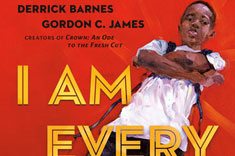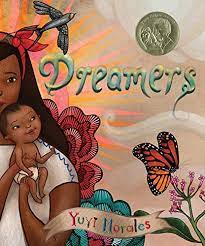Rudine Sims Bishop changed our views of children’s literature when she explained that books can be mirrors of our own lives, windows into somebody else’s life, and sliding glass doors acting as invitations to discover other worlds or possibilities. Her understanding of the complexity of children’s literature helped us reframe our thinking and intentionality. Every book represents a possibility and the beginning of a life-changing conversation. Books can make a long-lasting impact on all of our lives, regardless of age. They are also powerful because they can create images and concepts in our minds, some of them empowering and some of them harmful. As educators, we must take the time to read and reread books through a critical lens. Our classroom represents different lived experiences, and everyone carries a story inside of them.
Gholdy Muhammad reminds us that criticality is a pursuit we should all strive for as we think about the impact of stories in children’s lives. Here are some of the critical questions we may want to explore with texts, whether they are digital, multilingual, or multimodal:
- Who is telling this story?
- Whose viewpoint is expressed?
- Is the author a person within the community they have written about?
- How is the author portraying the characters in the stories?
- Do they feed a stereotype/trope narrative?
- Is it clear that the author did some research before writing about certain communities or events?
- Does the story offer a counter-narrative, a different lens to consider? How might alternative perspectives be represented?
The Importance of a Counter-Narrative Lens
I’d like to dive deeper into the last question about counter-narratives, because this is where we truly have a possibility for a different conversation. Often, in college classes on children’s literature, topics such as tropes and stereotypes are discussed. However, the conversations need to extend to ways to disrupt the tropes and stereotypes we might find in books. This requires us to read children’s literature or texts through a different criticality lens: a lens of counter-narratives.
Counter-narrative stories or texts are those where we get to read, learn about, or listen to the experiential knowledge and wisdom of those who are marginalized because of race, age, gender, languages, or economic status. Counter-narratives challenge the stereotypical ways in which certain ethnic groups are described or portrayed in master narratives. Counter-narratives center and lift the stories of a community’s joy, hope, knowledge, and resilience. These counter-narratives are usually told or shared by people belonging in those communities.
In my school district, I have students representing many different countries, cultures, languages, and traditions. We have students who speak one, two, three, and four different languages. Some of them are born in the USA, and some come from faraway places. One of my favorite ways to spend Saturday mornings is reading a large stack of picture books or browsing my Padlet, where I have added links to digital texts I’ll explore later.
Before I place a book in teachers’ hands, or before I read aloud in any classroom, I sit with a story/text and ask the questions I have shared above. When I get to question 5, I challenge myself to think about the tropes or stereotypes that I have heard or read about a community. Some of the stories that I hear about a community might sound like a story written from an asset-based perspective. For example, Japanese children are often portrayed as being really good at math. Then I push myself to consider what a narrative story like this does to our knowledge and understanding of Japanese students. In what ways are stories like these limiting our views and perspectives? What is the danger of being exposed to single narratives like this?
Centering Counter-Narrative Texts and Stories
Reading the text is important, but like Paulo Freire taught us, reading the world critically can change our lives. Below you’ll find counter-narrative stories where a community’s excellence is highlighted, where children’s stories are lifted and their voices are centered as a source of strength and voice.
I Am Every Good Thing by Derrick Barnes; illustrated by Gordon C. James
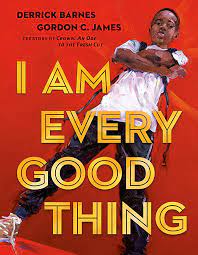 In this story, every Black child is celebrated for all that they are and all that they bring. Author Derrick Barnes wrote a beautiful tribute to every Black child’s genius, excellence, and joy.
In this story, every Black child is celebrated for all that they are and all that they bring. Author Derrick Barnes wrote a beautiful tribute to every Black child’s genius, excellence, and joy.
Indigenous Ingenuity by Deidre Havrelock and Edward Kay; illustrated by Kalila J. Fuller
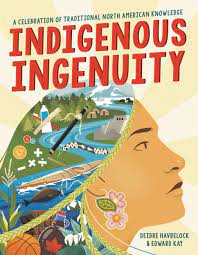 This text offers a rich, in-depth, and accurate celebration of Native American ways of knowing, being, and doing in the world. Deidre Havrelock is a member of the First Nations Cree.
This text offers a rich, in-depth, and accurate celebration of Native American ways of knowing, being, and doing in the world. Deidre Havrelock is a member of the First Nations Cree.
Under My Hijab by Hena Khan; illustrated by Aaliya Jaleel
In this story, a young girl notices the ways Muslim women in her life wear a hijab. Each portrait is a celebration and a possibility for a bright future.
My Two Border Towns by David Bowles; illustrated by Erika Meza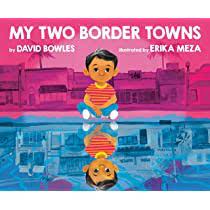
In this beautiful story, we meet a boy and his father who live in a border town. Every Saturday, they cross the border as part of their shopping ritual. The story centers the beautiful connection between father and son as they cross the bridge back and forth.
Dreamers by Yuyi Morales
Yuyi Morales writes through her own immigration lens, having made the journey with her son to the United States. She describes the immigration story with compassion, respect, and admiration for all those who make the journey and the choice to start in a new place.

